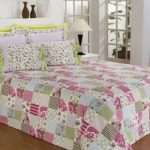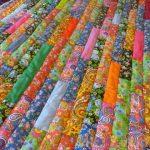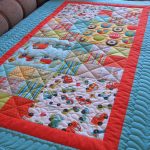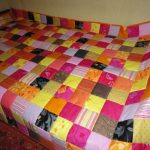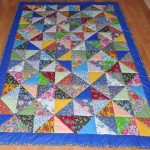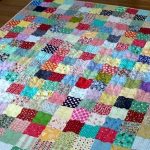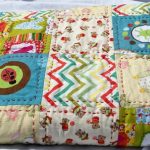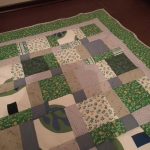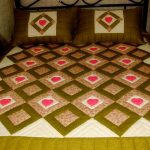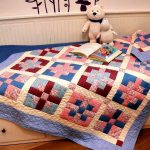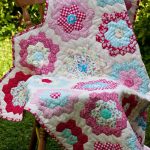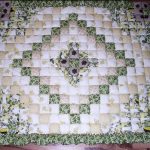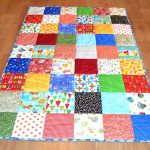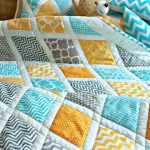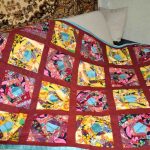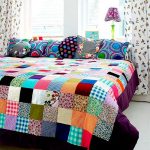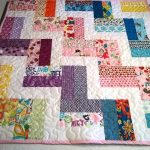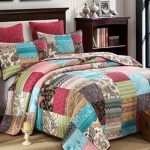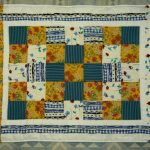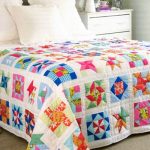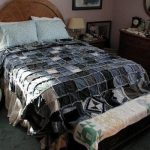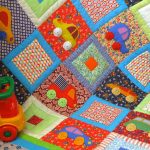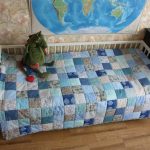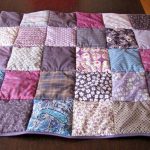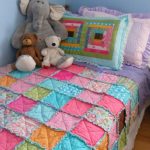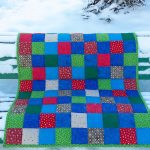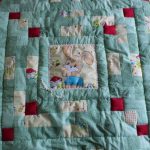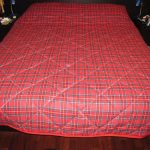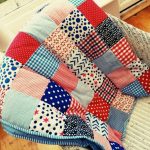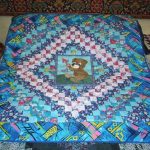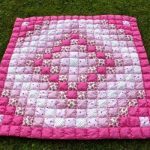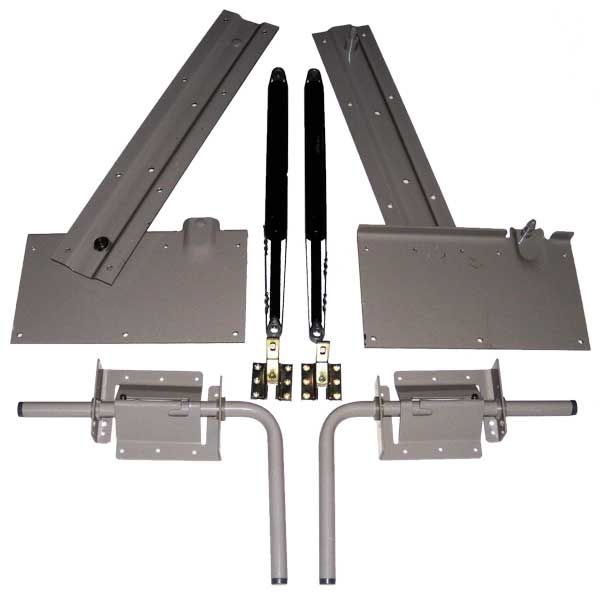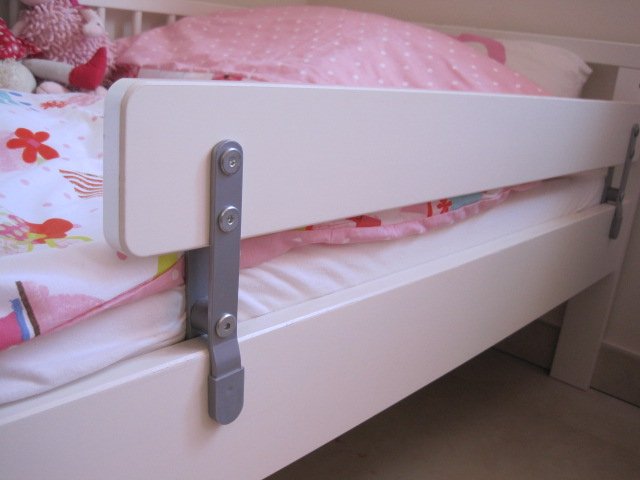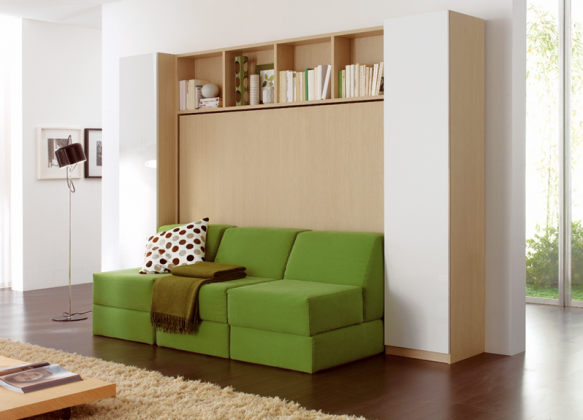How to quilt a blanket
A quilting stitch is an artistic mix of all its layers. This process is often given to masters very difficult, but, having become accustomed, you can create a real masterpiece.
A stitch requires patience, hard work, even courage. Qualitative result depends a lot on experience, constant careful monitoring of the situation. Even experienced seamstresses can rarely quilt blanket correctly.
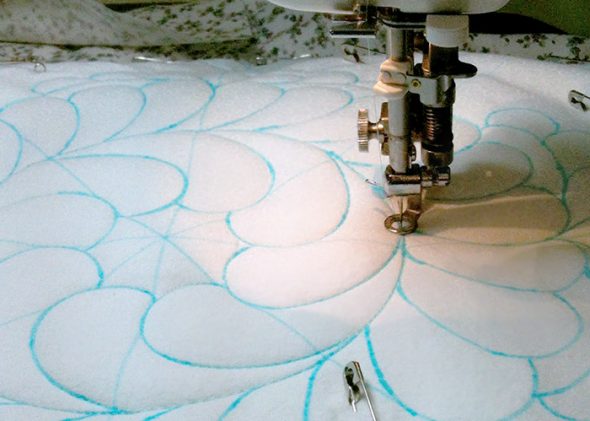
You can apply a pattern for stitches with the help of a needle and thread, special adhesive tape or chalk
However, you should not be afraid to take such work. By following the instructions, the inner feeling, you will surely achieve the desired result.
Quilting is usually either a patchwork blanket (patchwork technique) or a wadded one-piece blanket. Let us consider each option in more detail.
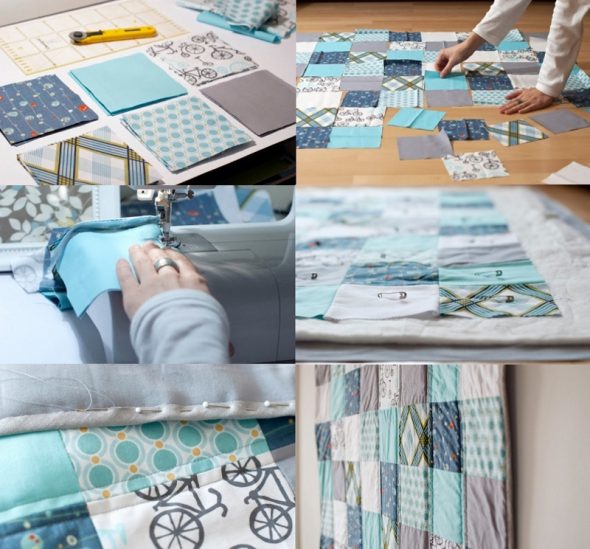
The steps of making a blanket using the patchwork technique
Content
Quilting Quilting

Square quilting order
Before you start stitches, you need to make all the necessary preparations.
Manual stitch preparation
First of all, decide how to stitch: manually or with a sewing machine. Choosing the first option, it is important to immediately get the tools, the standard set consists of the following tools.
- Big hoops. The larger the diameter, the better. Make sure that the hoop is comfortable to hold.
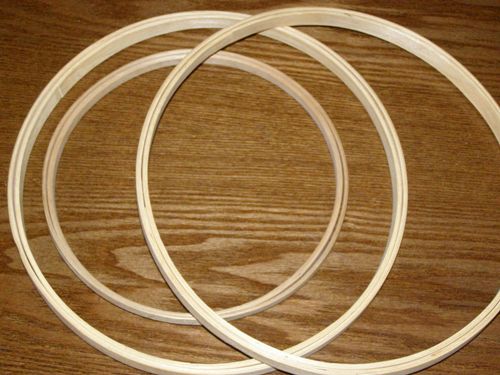
Large wooden hoop for hand quilting stitches
- At least two thimbles, because the needle will have to "take" on both sides of the cover.

Hand Sewing Thimbles
- Strong needles. The shorter its length, the neater the finished blanket. Working with a short needle, you get small, neat seams.

Thin little needle for sewing
- Thread of medium thickness, for example, №30. Too thin thread will break, too thick - too noticeable. Take the color that best suits the canvas; for a patchwork quilt, choose any shade that matches the color range.

Multi-colored sewing thread of medium thickness
The first step of the immediate work is a basting seam that will bring the lining, the gasket and the front side of the cover together. Usually, a patchwork pattern is not required for a patchwork cloth: they simply sew the joints of pieces of fabric.

Basting stitching for patchwork
At this stage of cooking is finished, you can start the firmware pattern.
Technique of work
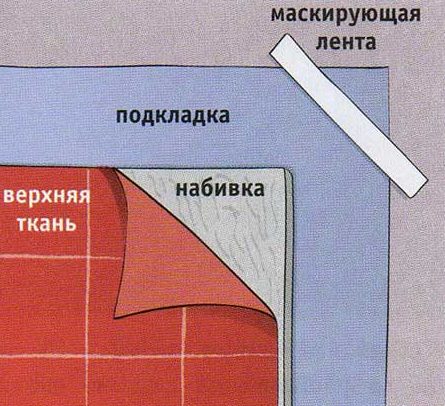
In the correct order we lay out the fabric blankets
The seams themselves are made with ordinary stitches, used for any such product.
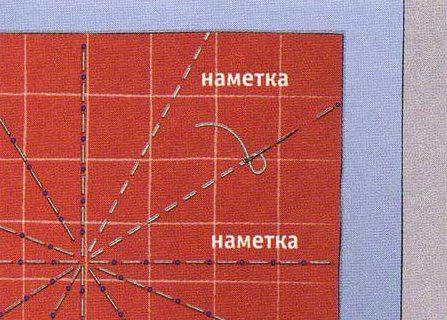
Mark up the pattern of stitches on the upper fabric, shear pins
More important here is to consider the essence of the first quilted seam.
- To begin with, position the hoop in such a way as to work towards you.
- Take a rather long thread, a needle, then make a knot at the end of the thread.
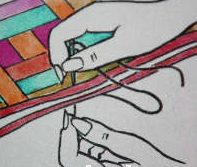
The needle must be held at right angles to the top layer, piercing through all 3 layers, pulling the thread down
- Pass the needle through the entire blanket from the bottom up, so that the bundle “hides”, remaining inside the middle layer - the filler.
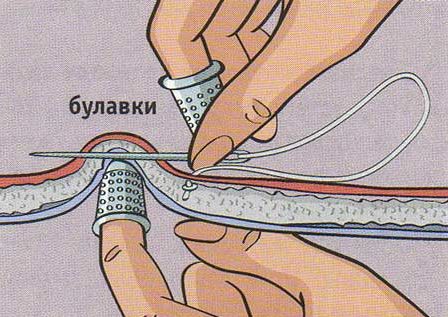
We sweep along the chipped lines, as we sweep, we take out the pins
- Stick a needle half a centimeter from the intended end of the stitch.
- Just pick up the fabric a little with your thumb, create a small fold, insert the needle at an angle, taking it from the other end.
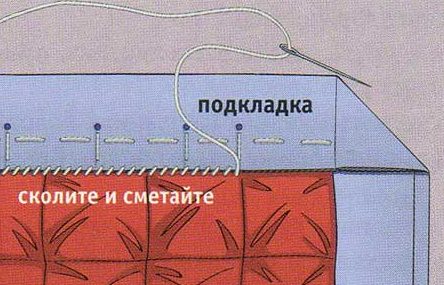
Wrap the extra lining on the top surface, bend the edge inward by 10 mm, peel off the pins and sweep through three layers, sew the lining with a secret seam
When the thread is finished, you need to hide its tail under the previous stitch, and the next one to start, respectively, to the first.
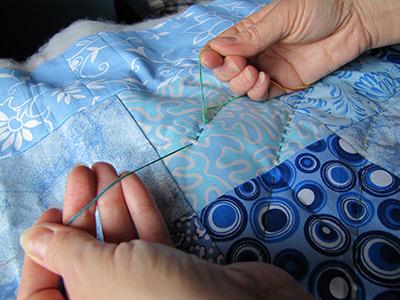
Manual stitching gives the product extra softness, but takes a lot of time.
How to quilt a blanket on a typewriter?
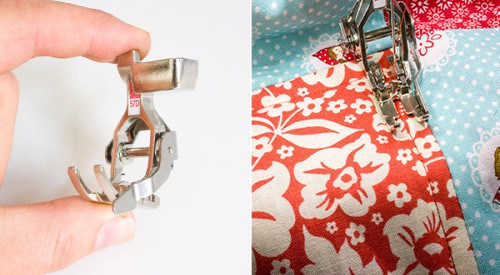
Foot on the machine, especially for patchwork with a side rail

Spring foot for stitches, darning, embroidery
This method is objectively easier than manual. One has only to prepare a special darning foot, a durable needle.
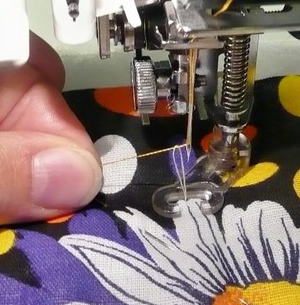
Bring the bottom thread up and make the first two - three point anchoring stitches.

The location of the needle at the bottom in the work with the foot lowered will not allow the fabric to budge.
The main rule of the work technique is uniformity: make sure that the sewing speed is the same during the process.
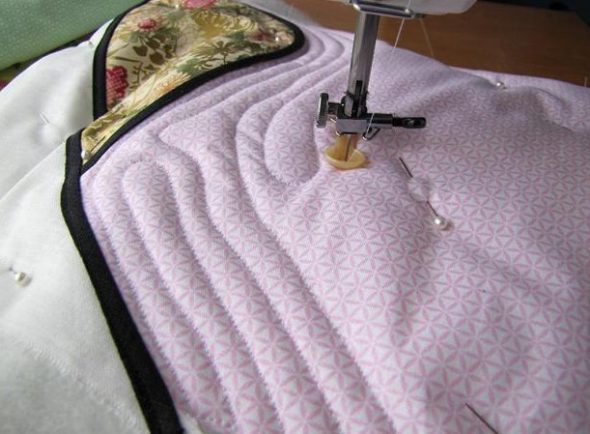
Straight stitch blanket on a sewing machine
Using the machine, most often quilted quilted blankets with artistic stitch.

Curved stitch - curved lines are stitched on the machine in the technique of “free stitch”
To do this, prepare a full-size diagram of the figure. It is better to apply a drawing with chalk or a pencil over the fabric, then stitch the contours.

Dotted stitch is suitable for arbitrary patterns.
High-quality edge fitting
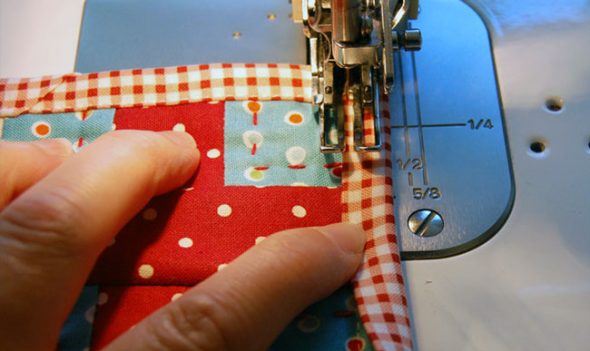
Quilting the edge of the quilt on a typewriter
There are many ways to create a beautiful edging, the most common is “cheesecake”.
First of all, leave a few free centimeters of the backing of the bedspread, if you missed this step - use a separate wide fabric tape. The back (or tape) should be bent on the front side and make a seam around the perimeter of the product, trying to get closer to the edge of the curved section.
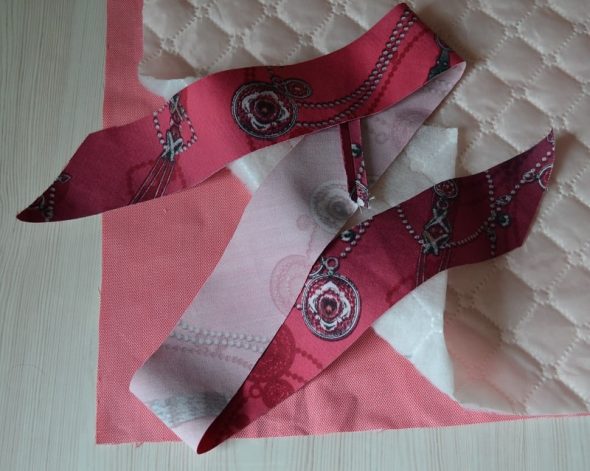
Processing blanket oblique bake
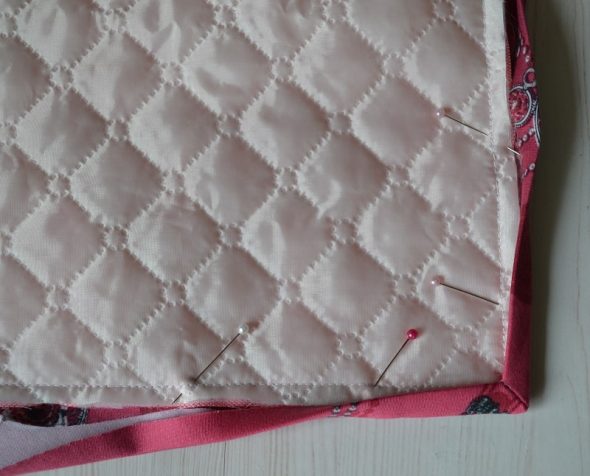
We pin a corner with a pin
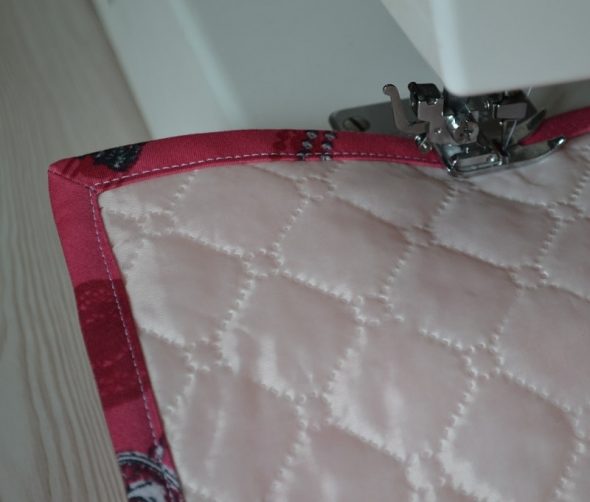
Stitch a stripe, checking how the needle seizes the lower half of the inlay on the wrong side
Conclusion

The stitch on the baby blanket in the form of the sun will surely please the baby
A quilt will become an indispensable element of every home, a warm reminder of the love of the person who created it. A stitch at home is not difficult if you have the desire, perseverance.
Video: Patchwork ether 37. How to quilt a quilt?
Photo-collection of beautiful quilts in patchwork technique, created by yourself:
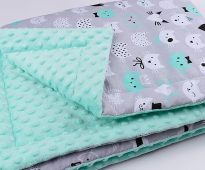 Beautiful plush blanket Minky
Beautiful plush blanket Minky
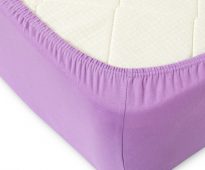 How to fix the sheet on the mattress so that it does not slip
How to fix the sheet on the mattress so that it does not slip
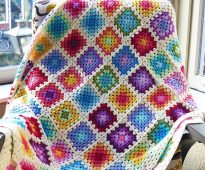 Knit a crochet crochet of yarn
Knit a crochet crochet of yarn

